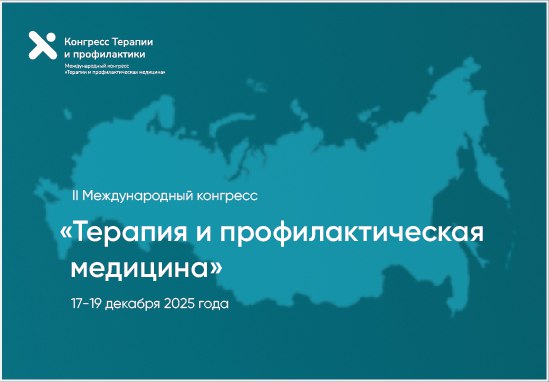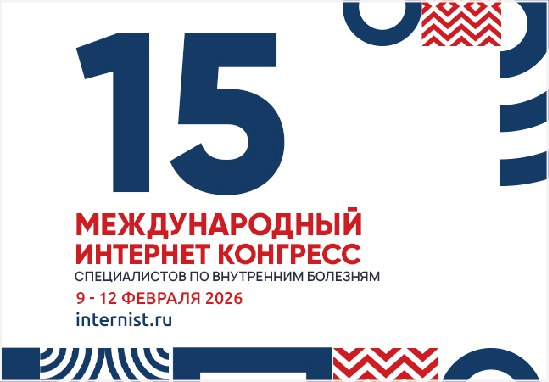СТАТЬЯ ОТОЗВАНА: КАРДИОМЕТАБОЛИЧЕСКИЕ НАРУШЕНИЯ И МОЧЕКАМЕННАЯ БОЛЕЗНЬ: ПАТОГЕНЕТИЧЕСКИЕ АСПЕКТЫ КОМОРБИДНОСТИ
https://doi.org/10.15829/1728-8800-2017-6-122-127
Аннотация
Коморбидность хронических неинфекционных заболеваний является актуальной проблемой современной медицины. Установлено, что метаболический синдром (МС) имеет патогенетическую связь с эректильной дисфункцией (ЭД), гипогонадизмом, подагрой и мочекаменной болезнью (МКБ), что служит ярким примером коморбидности. В статье рассматривается широкий спектр взаимосвязи МС и МКБ. С учетом высокой распространенности МКБ, как и МС, ученые проследили тесную корреляцию между МС и случаями возникновения МКБ. Наиболее часто у пациентов с МС обнаруживают мочекислые камни в мочевыводящих путях. Определены патофизиологические механизмы формирования таких камней, а также возможность образования оксалатных или смешанных камней у пациентов с МС. Таким образом, при разработке алгоритмов диагностики, лечения и профилактики обоих заболеваний необходимо учитывать их коморбидность.
Ключевые слова
Об авторах
Г. Г. ШарвадзеРоссия
Кандидат медицинских наук, старший научный сотрудник лаборатории по разработке междисциплинарного подхода в профилактике хронических неинфекционных заболеваний
Москва
А. К. Керимов
Россия
Врач уролог
Москва
М. Н. Мамедов
Россия
Доктор медицинских наук, профессор, руководитель лаборатории по разработке междисциплинарного подхода в профилактике хронических неинфекционных заболеваний
Москва
Список литературы
1. Boytsov SA, Chuchalin AG. Recommendations on prevention of non-infectious diseases. Moscow 2013; 5-6. (in Russ.) Бойцов С. А., Чучалин А. Г. Рекомендации по профилактике неинфекционных заболеваний. Москва 2013; 5-6.
2. Barnett K, Mercer SW, Norbury M, et al. Epidemiology of multimorbidity and implications for health care, research, and medical education: a cross-sectional study. Lancet 2012; 7; 380 (9836): 37-43.
3. Lazebnik LB, Konev YV, Drozdov VN, Efremov LI. Polypharmacy: the geriatric aspect of the problem. Consilium medicum 2007; 12: 29. (in Russ.) Лазебник Л. Б., Конев Ю. В., Дроздов В. Н., Ефремов Л. И. Полипрагмазия: гериатрический аспект проблемы. Consilium medicum 2007; 12: 29-34.
4. Boytsov SA, Samorodskaya IV, Semenov VY. Influence of medical and non-medical factors on the mortality of the population, economic factors. Problems of social hygiene and the history of medicine 2016; 6: 335-9. (in Russ.) Бойцов С. А., Самородская И. В., Семенов В. Ю. Влияние медицинских и немедицинских факторов на смертность населения, экономические факторы. Проблемы социальной гигиены и история медицины 2016; 6: 335-9.
5. Mamedov MN, Sharvadze GG. Interdisciplinary approach to the problems of men’s health in order to improve quality and longevity. Preventive medicine 2011; 5: 30-5. (in Russ.) Мамедов М. Н., Шарвадзе Г. Г. Междисциплинарный подход к проблемам мужского здоровья с целью улучшения качества и продолжительности жизни. Профилактическая медицина 2011; 5: 30-5.
6. Hu G, Qiao Q, Tuomilehto J, еt al. Prevalence of the metabolic syndrome and its relation to all-cause and cardiovascular mortality in nondiabetic European men and women. Arch Intern Med 2004; 5; 1066-76.
7. Qiao Q. Comparison of different definitions of the metabolic syndrome in relation to cardiovascular mortality in European men and women. Diabetologia 2006; 12: 2837-46.
8. Romantsova TI, Poluboyarinova IV, Roik OV. The dynamics of fat tissue according to MP-tomography in obese patients on the background of Reduxin treatment. Obesity and metabolism. 2012; 4: 39-43. (in Russ.) Романцова Т. И., Полубояринова И. В., Роик О. В. Динамика состояния жировой ткани по данным MP-томографии у больных ожирением на фоне лечения Редуксином. Ожирение и метаболизм 2012; 4: 39-43.
9. West B, Luke A, Durazo-Arvizu RA, еt al. Metabolic syndrome and self-reported history of kidney stones: the National Health and Nutrition Examination Survey (NHANES III) 1988-1994. Am J Kidney Dis 2008; 5: 741-7.
10. Ritchie SA, Connell JM. The link between abdominal obesity, metabolic syndrome and cardiovascular disease. Nutr Metab Cardiovasc Dis 2007; 4: 319-26.
11. Suslyaeva NM, Zavadovskaya VD, Shulga OS. The possibilities of ultrasound in the diagnosis of visceral obesity. Ultrasonic and functional diagnostics 2012; 4: 24-9. (in Russ.) Сусляева Н. М., Завадовская В. Д., Шульга О. С. Возможности ультразвукового исследования в диагностике висцерального ожирения. Ультразвуковая и функциональная диагностика 2012; 4: 24-9).
12. John BS, Patel U, Anson K. What radiation exposure can a patient expect during a single stone episode. J Endourol 2008; 22 (3): 419-22.
13. Pak CY, Sakhaee K, Moe O, et al. Biochemical profile of stone-forming patients with diabetes mellitus. Urology 2003; 3: 523-7.
14. Losito A, Nunzi EG, Covarelli C, еt al. Increased acid excretion in kidney stone formers with essential hypertension. Nephrol Dial Transplant 2009; 1: 137-41.
15. Sakhaee K, Maalouf NM, Sinnott B. Clinical review. Kidney stones 2012: pathogenesis, diagnosis, and management. J Clin Endocrinol Metab 2012; 6: 1847-60.
16. Henneman PH, Wallach S, Dempsey EF. Мetabolism defect responsible for uric acid stone formation. J Clin Invest 1962; 3: 537-42.
17. Maalouf NM, Cameron MA, Moe OW, еt al. Low urine pH: a novel feature of the metabolic syndrome. Clin J Am Soc Nephrol 2007; 9: 883-8.
18. Sakhaee K, Maalouf NM, Sinnott B. Clinical review. Kidney stones 2012: pathogenesis, diagnosis, and management. J Clin Endocrinol Metab 2012; 6: 1847-60.
19. Krivosikova Z, Spustova V, Dzurik R. Participation of P-dependent and P-independent glutaminases in rat kidney ammoniagenesis and their modulation by metabolic acidosis, hippurate and insulin. Physiol Res 1998; 3: 177-83.
20. Cupisti A, Meola M, D’Alessandro C, et al. Insulin resistance and low urinary citrate excretion in calcium stone formers. Biomed Pharmacother. 2007; 12: 86-90.
21. DeFronzo RA, Cooke CR, еt al. The effect of insulin on renal handling of sodium, potassium, calcium, and phosphate in man. J Clin Invest 1975; 4: 845-55.
22. Poletti P, Platon A, Rutschmann O. Low-dose versus standard-dose CT protocol in patients with clinically suspected renal colic. AJR Am J Roentgenol 2007; 188: 927-33.
23. Dedov II, Melnichenko GA. Obesity: etiology, pathogenesis, clinical aspects. “Med. Inform. Agency” 2006; 456p. (in Russ.) Дедов И. И., Мельниченко Г. А. Ожирение: этиология, патогенез, клинические аспекты. “Мед. Информ. агентство” 2006; 456c.
24. Taylor EN, Mount DB, Forman JP. Association of prevalent hypertension with 24-hour urinary excretion of calcium, citrate, and other factors. Am J Kidney Dis 2006; 5: 780-9.
25. Siener R, Glatz S, Nicolay C. The role of overweight and obesity in calcium oxalate stone formation. Obes Res 2004; 1: 106-13. 26. Ekeruo WO, Tan YH, Young MD, et al. Metabolic risk factors and the impact of medical therapy on the management of nephrolithiasis in obese patients. J Urol 2004; 7: 159-63.
26. Mamedov MN, Sharvadze GG. Erectile dysfunction and androgen-deficiency: a view of the cardiologist. Caviovascular Therapy and Prevention 2009; 4S2; 32b-3. (in Russ.) Мамедов М. Н., Шарвадзе Г. Г. Эректильная дисфункция и андрогендефицитное состояние: взгляд кардиолога. Кардиоваскулярная терапия и профилактика 2009: 4S2: 32b-3.
27. Gusakova DA, Kalinchenko SY, et al. The role of correction of hypogonadism in the treatment and prevention of urolithiasis in men with metabolic syndrome. Modern problems of science and education 2015; 2: 2-20. (in Russ.) Гусакова Д. А., Калинченко С. Ю. и др. Роль коррекции гипогонадизма в лечении и профилактике мочекаменной болезни у мужчин с метаболическим синдромом. Современные проблемы науки и образования 2015; 2: 2-20.
Рецензия
Для цитирования:
Шарвадзе Г.Г., Керимов А.К., Мамедов М.Н. СТАТЬЯ ОТОЗВАНА: КАРДИОМЕТАБОЛИЧЕСКИЕ НАРУШЕНИЯ И МОЧЕКАМЕННАЯ БОЛЕЗНЬ: ПАТОГЕНЕТИЧЕСКИЕ АСПЕКТЫ КОМОРБИДНОСТИ. Кардиоваскулярная терапия и профилактика. 2017;16(6):122-127. https://doi.org/10.15829/1728-8800-2017-6-122-127
For citation:
Sharvadze G.G., Kerimov A.К., Mamedov М.N. RETRACTED: CARDIOMETABOLIC DISORDERS AND UROLITHIASIS: PATHOGENESIS OF COMORBIDITY. Cardiovascular Therapy and Prevention. 2017;16(6):122-127. (In Russ.) https://doi.org/10.15829/1728-8800-2017-6-122-127
























































